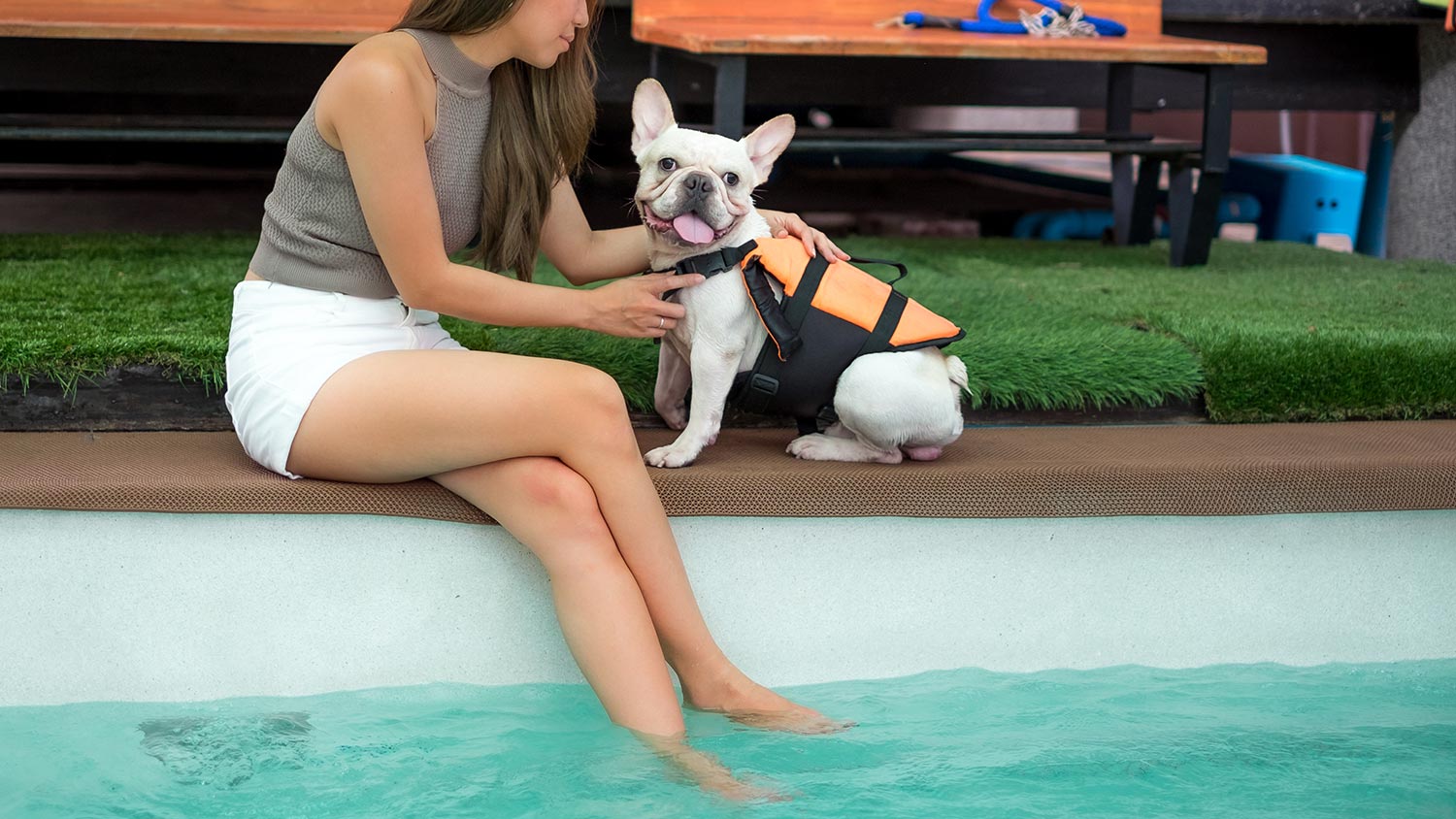If you’re lucky, your dog is a natural swimmer who takes to water like a duck does. For many owners, this isn’t the case, so puppy swimming lessons are in order. Even if your dog isn’t a water lover, you should teach him how to swim in case he ever gets into a situation where he needs to swim to safety.
Can All Dogs Swim?
Not all dog breeds are built for water. Breeds with a large chest, short legs, short muzzles or small hindquarters may struggle with swimming. Breeds with water-resistant coats and webbing between their toes have been bred to work in the water and will find swimming to be easier and more enjoyable. However, just because your dog isn’t built to swim, doesn’t mean that he won’t like water. Regardless of breed, you should always keep a close eye on your dog when he’s swimming as he may be having too much fun to realize how tired he’s become in the water.
Before You Begin
Teaching your dog how to swim doesn’t have to be difficult. The most important thing is to be patient. It could take an hour or a week before your dog is comfortable in the water. Try to bring along another dog who is an expert swimmer to show your pup that swimming can be fun!
Start with a Baby Pool
Teach your dog to get into and out of a dry baby pool by using treats or his favorite toys. Once he’s happy to enter and play in the dry pool, fill it with about an inch of water. Your dog may be wary of the new element of water in his play zone, so use high value treats to encourage him to re-enter the pool. If he’s still unsure, try getting in the pool yourself and asking him to join you. Once your dog will play in the pool with a small amount of water, slowly increase the amount of water. If your dog seems tired or overwhelmed at any point, stop your training for the day, dry off your pup and play a fun game together to relax. It may take several days for your dog to feel comfortable in a kiddie pool filled with water and that’s okay! Remaining positive and encouraging will teach your dog not to worry about water and will reinforce that swimming is fun!
Swimming Pool Safety
Upgrading to swimming in a real pool will be easier once your dog has learned to love the water. Never throw your dog into a body of water, but rather gently encourage them to enter it on their own. You will have more success teaching your dog to swim if you are in the water as well, so dress accordingly!
Lead your dog into the pool on the first step (shallowest area) then lead him back to dry land. Do this a few times to reinforce the idea that the pool steps are the way out of the pool. Use treats and toys to encourage your dog to swim out into the pool, but be close by to help if he starts to panic. If your dog seems to be struggling with what to do with his body to stay afloat, support his midsection and hindquarters until he understands how to paddle with all four feet.
Natural Bodies of Water
If you take your dog to swim in a lake, pond or river, ensure that there isn’t a strong current that your dog will have to fight against. Learning to swim is difficult enough without a current dragging him away from shore! Be aware of boating and fishing zones and don’t let your dog swim in these areas.
The giardia parasite can be swallowed by dogs playing in rivers and lakes. Giardia is a single-celled parasite that inhibits your dog’s ability to absorb nutrients, water and electrolytes. The most common symptoms are diarrhea and loss of appetite, so if your dog begins to act ill after playing in a natural body of water, take him to the veterinarian right away.
Shopping for Life Jackets
Dogs who are not the strongest swimmers, but still enjoy the water, may prefer the added support of life jackets. When first teaching your dog to swim, the flotation can help your dog feel more at ease. While shopping for a life jacket, choose one that provides enough buoyancy, is the right fit for your dog, and is a bright color for better visibility.
Tips for A Healthy Swimmer
Once your dog has finished swimming, rinse or bathe him to remove residue from the pool, lake or river. Be sure to dry him off, taking great care to dry out the insides of his ears. One of the main causes of ear infections comes from moisture trapped in the ears!
Dogs can get sunburned just like people can! Apply dog-safe sunscreen to areas on your dog with light skin or white fur; reapply throughout the day as water will wash the sunscreen off.
Swim On!
Swimming is excellent aerobic exercise for dogs of all ages. The water removes pressure from joints, which makes swimming a beneficial exercise for dogs who are overweight or recovering from an injury. Plus, it can be a lot of fun for you dog! Introduce swimming in a patient, safe manner and soon your dog will be the first one in the water every time!
,

